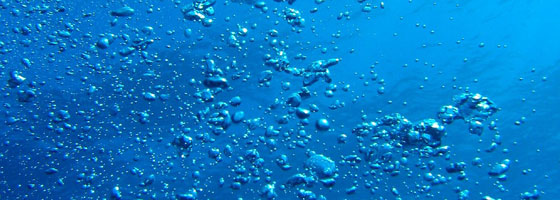What is dissolved oxygen in water?

UPDATE: Fondriest Environmental is offering their expertise in dissolved oxygen through their new online knowledge base. For an updated and comprehensive look at DO and the technology used to measure it, check out: Dissolved Oxygen, or Measuring Dissolved Oxygen.
Dissolved oxygen in water is vital for underwater life. It is what aquatic creatures need to breathe. Dissolved oxygen is often called DO for short.
Why is dissolved oxygen important?
Just as we need air to breathe, aquatic organisms need dissolved oxygen to respire. It is necessary for the survival of fish, invertebrates, bacteria, and underwater plants. DO is also needed for the decomposition of organic matter.
How is dissolved oxygen measured?
DO concentrations can be reported as milligrams per liter, parts per million, or as percent air saturation. 1 milligram per liter is equal to 1 part per million. 100% air saturation refers to the amount of dissolved oxygen that would be in water if it were completely saturated with air.
Dissolved Oxygen Technology
Dr. Leland Clark offered the first practical in-situ measurement technology for DO with his patented membrane-covered, electrochemical sensor. Over the years, the technology has evolved into three common electrochemical sensors technologies: galvanic, polarographic and pulsed polarographic.
Galvanic and polarographic DO sensors both use a thin semi-permeable membrane that wraps over an electrolyte solution and two metal electrodes. Oxygen in the water diffuses through the membrane at a rate proportional to its partial pressure. These probes measure the current as oxygen is reduced at the cathode and more oxygen diffuses through the membrane. Membrane-based DO sensors, however, have a number of deficiencies making them difficult to use in extended deployments. The membrane is fragile, requires frequent replacement, and these sensors require frequent calibration and stirring or flowing water.
Manufacturers have now also developed dissolved oxygen sensors with optical sensing technology. These units have more durable sensing elements than membrane-based DO sensors. They utilize a fluorescent element that reacts differently to varying levels of oxygen in the water, which is measurable by the color of light that reflects off the fluorescent element and into a light detector inside the sensor. This technology has changed DO sensors from having the shortest deployment endurance to one of the longest and is far more feasible for long-term river monitoring applications.




Martha
April 30, 2015 at 8:11 am
Useful information. Just cleared my doubts
Pingback: Workshop 8: Being a Lab Tech – Professional Development Portfolio